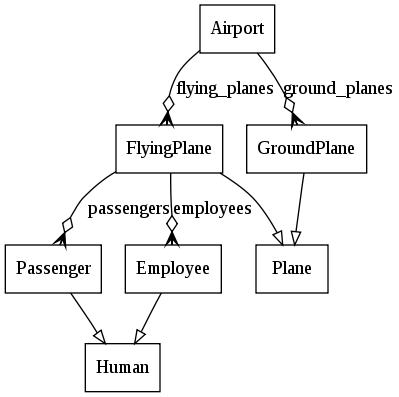How can I analyze Python code to identify problematic areas?
How can I analyze Python code to identify problematic areas?
I have a large source repository split across multiple projects. I would like to produce a report about the health of the source code, identifying problem areas that need to be addressed.
Specifically, I'd like to call out routines with a high cyclomatic complexity, identify repetition, and perhaps run some lint-like static analysis to spot suspicious (and thus likely erroneous) constructs.
How might I go about constructing such a report?
Answer by freespace for How can I analyze Python code to identify problematic areas?
For static analysis there is pylint and pychecker. Personally I use pylint as it seems to be more comprehensive than pychecker.
For cyclomatic complexity you can try this perl program, or this article which introduces a python program to do the same
Answer by Pierre-Jean Coudert for How can I analyze Python code to identify problematic areas?
Thanks to Pydev, you can integrate pylint in the Eclipse IDE really easily and get a code report each time you save a modified file.
Answer by Mike Griffith for How can I analyze Python code to identify problematic areas?
For measuring cyclomatic complexity, there's a nice tool available at traceback.org. The page also gives a good overview of how to interpret the results.
+1 for pylint. It is great at verifying adherence to coding standards (be it PEP8 or your own organization's variant), which can in the end help to reduce cyclomatic complexity.
Answer by Anonymous for How can I analyze Python code to identify problematic areas?
There is a tool called CloneDigger that helps you find similar code snippets.
Answer by msemelman for How can I analyze Python code to identify problematic areas?
Pycana works like charm when you need to understand a new project!
PyCAna (Python Code Analyzer) is a fancy name for a simple code analyzer for python that creates a class diagram after executing your code.
See how it works: http://pycana.sourceforge.net/
output:

Answer by Dave Halter for How can I analyze Python code to identify problematic areas?
For cyclomatic complexity you can use radon: https://github.com/rubik/radon
(Use pip to install it: pip install radon)
Additionally it also has these features:
- raw metrics (these include SLOC, comment lines, blank lines, &c.)
- Halstead metrics (all of them)
- Maintainability Index (the one used in Visual Studio)
Answer by Wes Kendall for How can I analyze Python code to identify problematic areas?
Use flake8, which provides pep8, pyflakes, and cyclomatic complexity analysis in one tool
Answer by A-B-B for How can I analyze Python code to identify problematic areas?
For checking cyclomatic complexity, there is of course the mccabe package.
Installation:
$ sudo pip install --upgrade mccabe Usage:
$ python -m mccabe --min=6 /path/to/myfile.py Note the threshold of 6 above. Per this answer, scores >5 probably should be simplified.
Sample output with --min=3:
68:1: 'Fetcher.fetch' 3 48:1: 'Fetcher._read_dom_tag' 3 103:1: 'main' 3 It can optionally also be used via pylint-mccabe, etc.
Fatal error: Call to a member function getElementsByTagName() on a non-object in D:\XAMPP INSTALLASTION\xampp\htdocs\endunpratama9i\www-stackoverflow-info-proses.php on line 72







0 comments:
Post a Comment